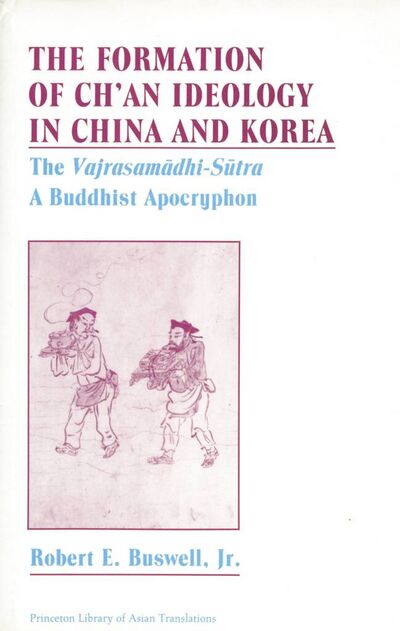The Formation of Ch'an Ideology in China and Korea
< Books
(Created page with "{{Book |BookPerson={{Book-person |PersonPage=Buswell, R. |PersonName=Robert E. Buswell Jr. }} |FullTextRead=No |AddRelatedTab=No }}") |
|||
| Line 5: | Line 5: | ||
}} | }} | ||
|FullTextRead=No | |FullTextRead=No | ||
| + | |BookToc=*{{i|''List o fIllustrations''|ix}} | ||
| + | *{{i|''List of Tables''|xi}} | ||
| + | *{{i|''Preface''|xiii}} | ||
| + | *{{i|''Abbreviations and Conventions''|xvii}} | ||
| + | |||
| + | '''PART ONE: STUDY''' | ||
| + | |||
| + | *{{i|'''Chapter One''' The ''Vajrasamādhi-Sūtra'' as an Apocryphal Scripture|3}} | ||
| + | **{{i|Problems and Prospects of Studying the ''Vajrasamādhi-Sūtra''|4}} | ||
| + | **{{i|The Eclecticism of the ''Vajrasamādhi''|24}} | ||
| + | **{{i|The Model for the ''Vajrasamādhi'''s Narrative Structure|29}} | ||
| + | **{{i|The ''Vajrasamādhi'' in the Chinese Catalogues|33}} | ||
| + | |||
| + | Chapter Two The Hagiographies of the Korean Scholiast | ||
| + | Wonhyo: The Dating and Provenance of the Vajrasamadhi 41 | ||
| + | The Sung Kao-seng chuan Hagiography and the Provenance | ||
| + | of the Vajrasamadhi 43 | ||
| + | The Samguk Yusa Hagiography and the Dating of the Vajrasamadhi 60 | ||
| + | |||
| + | Chapter Three The Doctrinal Teachings of the Vajrasamadhi 74 | ||
| + | The Acculturation of Buddhism to East Asia 74 | ||
| + | Tathagatagarbha and the Immanence of Enlightenment 78 | ||
| + | Amalavijnana and the Innate Purity of Mind 92 | ||
| + | The Meaning of "Vajrasamadhi": The Practical Implications | ||
| + | of Innate Enlightenment 104 | ||
| + | The Vajrasamadhi's Message to Silla Buddhists 115 | ||
| + | |||
| + | Chapter Four Ch'an Elements in the Vajrasamadhi: Evidence | ||
| + | for the Authorship of the Sutra 123 | ||
| + | Ch'an Influences in the Vajrasamadhi 123 | ||
| + | Early Korean Son and the Legend of Pomnang 164 | ||
|AddRelatedTab=No | |AddRelatedTab=No | ||
}} | }} | ||
Revision as of 11:08, 22 April 2020
This book contains an extensive study and a translation of the Vajrasamādhi Sūtra and makes a convincing argument to rethink the "national lines of argument" that had previously dominated discussions of East Asian Buddhist traditions. Buswell shows how Chan developed in multiple communities; it was not a Chinese phenomenon that was then exported to Korea and Japan. He also shows how the scripture is firmly in the Chinese Yogācāra tradition of Paramārtha, containing an extensive discussion of "immaculate consciousness" (amalavijñāna), the ninth consciousness which unites saṃsāra and nirvāṇa in a "single taste." Buswell draws on Japanese scholarship, such as that by Mozuno Kōgen, who first concluded that the sūtra was an apocryphon.
| Citation | Buswell, Robert E., Jr. The Formation of Ch'an Ideology in China and Korea: The Vajrasamādhi-Sūtra, A Buddhist Apocryphon. Princeton Library of Asian Translations. Princeton, NJ: Princeton University Press, 1989. |
|---|---|

